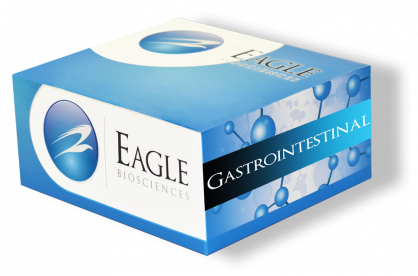Alpha-1 Antitrypsin ELISA Assay
The Alpha-1 Antitrypsin ELISA Assay is For Research Use Only
Size: 1×96 wells
Sensitivity: 0.4 ng/mL
Standard Range: 3.3 – 90 ng/mL
Incubation Time: 2.25 hours
Sample Type: Serum, plasma, stool
Sample Size: 100 µl
Reference values
Stool: < 0.27 mg/g stool
Ref: G. Beckmann (Hrsg.). Mikroökologie des Darmes ISBN 3-87706-521-X; S.263
We recommend that each laboratory develop their own normal range. The values mentioned above are only for orientation and can deviate from other published data.
Assay Background
Alpha-1-Antitrypsin is a 52 kD glycoprotein, which is produced by the liver, intestinal macrophages, monocytes and mucous membrane cells of the gut. It belongs to the group of acute phase proteins and is one of the most important proteinase inhibitors. Alpha-1-antitrypsin inhibits, beside others, the proteinases trypsin and the elastase of neutrophils. A lack of α-1-AT leads to an enhanced proteolysis. Only a very small amount of alpha-1-antitrypsin is cleaved or resorbed in the gut. Therefore the measurement of α-1-AT in stool reflects the permeability of the gut during inflammatory processes.
The Eagle Biosciences Alpha-1 Antitrypsin ELISA Assay Kit allows an easy, rapid and precise quantitative determination of alpha-1-antitrypsin in biological samples. The kit includes all reagents ready to use for preparation of the samples.
Related Products
Anti-Gliadin sIgA / IgA ELISA Assay Kit
Eosinophil Derived Neurotoxin (EDN) ELISA Assay
Secretory IgA ELISA Assay


